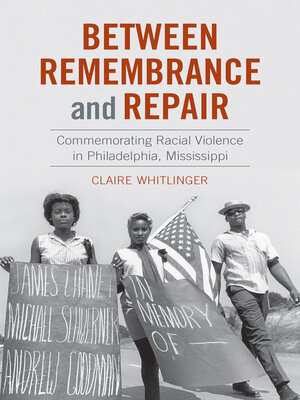Between Remembrance and Repair
ebook ∣ Commemorating Racial Violence in Philadelphia, Mississippi
By Claire Whitlinger

Sign up to save your library
With an OverDrive account, you can save your favorite libraries for at-a-glance information about availability. Find out more about OverDrive accounts.
Find this title in Libby, the library reading app by OverDrive.



Search for a digital library with this title
Title found at these libraries:
| Library Name | Distance |
|---|---|
| Loading... |
Few places are more notorious for civil rights–era violence than Philadelphia, Mississippi, the site of the 1964 “Mississippi Burning” murders. Yet in a striking turn of events, Philadelphia has become a beacon in Mississippi’s racial reckoning in the decades since. Claire Whitlinger investigates how this community came to acknowledge its past, offering significant insight into the social impacts of commemoration. Examining two commemorations around key anniversaries of the murders held in 1989 and 2004, Whitlinger shows the differences in how those events unfolded. She also charts how the 2004 commemoration offered a springboard for the trial of former Klan leader Edgar Ray Killen for his role in the 1964 murders, the 2006 passage of Mississippi’s Civil Rights/Human Rights education bill, and the initiation of the Mississippi Truth Project. In doing so, Whitlinger provides the first comprehensive account of these high profile events and expands our understanding of how commemorations both emerge out of and catalyze associated memory movements.
Threading a compelling story with theoretical insights, Whitlinger delivers a study that will help scholars, students, and activists alike better understand the dynamics of commemorating difficult pasts, commemorative practices in general, and the links between memory, race, and social change.
Threading a compelling story with theoretical insights, Whitlinger delivers a study that will help scholars, students, and activists alike better understand the dynamics of commemorating difficult pasts, commemorative practices in general, and the links between memory, race, and social change.







